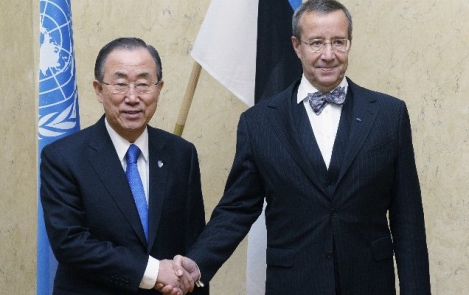-
Reset
+


"Estonian President Toomas Hendrik Ilves will launch UN exhibit on Finno-Ugric peoples by filmmaker Lennart Meri", Baltic Review, 23.09.2014
23.09.2014
Ann Charles
"The Waterfowl People": Lennart Meri's Film Expeditions 1969-1988" is the rather unusual name given to a really exceptional exhibit on view at UN Headquarters in New York.
The exhibit, which focuses on the Finno-Ugric peoples includes not only the Estonians, Finns, and the Hungarians, but many lesser known Finno-Ugric peoples.
For example, what about the Samis, Livonians, Komis, Khantys, Mansis, Maris, Erzyas, Karelians, Notians and Vespians, as well as many other Finno-Ugric peoples? Inspite of the many challenges, small nations have kept their culture alive as beautifully documented by filmmaker Lennart Meri.
This exhibit is making its debut at the United Nations in connection with the World Conference on Indigenous Peoples, which will take place for the first time at UN Headquarters in New York on September 22-23.
On Monday, September 22, at 6:00PM, Estonian President Toomas Hendrik Ilves is expected to make a few opening remarks at the exhibit to welcome members of the international community and the media. This special exhibit being presented by the Permanent Mission of Estonia to the UN in New York will take place in the UN Secretariat Building, curved wall area. A reception will follow.
Lennart Meri, described as "a beloved Estonian Head of State (1992-2001), and a writer and filmmaker" tells the "ancient tale of the Estonian nation and its kindred peoples, searching foremost for an answer to the eternal questions of small nations-who they are, where they come from, and where they are going."
As stated in the description of the exhibit "behind Lennart Meri's decision to research Finno-Ugric peoples and to record films on them, was a desire to demonstrate that even the smallest nations possess their own value and right to exist. This was a challenge to the political reality of that time."
The exhibit runs from September 15–26 in the UN Secretariat Building.
Original article on the Baltic Review webpage.



